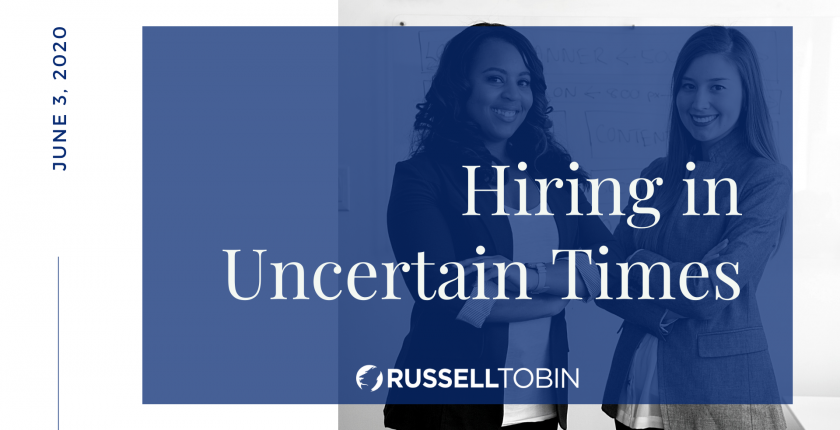We are living in arguably the most volatile business environment that anybody has every faced, or likely will face, in their lifetime. Currently 46 of the 50 states have reopened in some form, and many questions linger.
Will they stay open?
Who should be returning to work?
How will this affect the economy?
How will this affect our business?
What should we do?
The list goes on and on and nobody, regardless of what they tell you or how many “followers” they have, has any idea what will happen in the next two days, two weeks, two months or even two years. So, the big question remains,“How does anybody hire in these uncertain times without assuming even more risk in an already VERY risky time?”By “risk,” I am referring to more than just capital—I’m referring to your talent brand, time, patience, and customers (new and existing).
Yes, I work for a recruiting company, so this lens could be viewed as biased. However, I’m urging you to bear in mind that we interact with thousands of hiring managers and talent folks on a weekly basis, so this article is drawn from those conversations. It is also intertwined with what we at Russell Tobin are doing from a hiring perspective. Let the record show that we have hired during this time and plan to do more of it.
There’s a lot of superb talent out there from some of the most innovative companies forced to conduct layoffs. This list includes talented people from Sonder,WeWork, Lyft, Uber, Managed by Q, and many other companies who were forced to reduce their workforce. If you have the chance, appetite, and ability, you can come out of this with an arsenal of talent that will position your company to grow by leaps and bounds once the dust settles. Below are a few ideas that we are seeing companies adopt that allow them to hire and avoid as much risk as possible.
‘Moving Target’ Start Dates
Once you have decided that somebody is right for your team and you want to hire them, start date always come into question. We would advise that you tell the candidate that the date is “subject to change.” If you don’t think this person will be needed in two weeks but feel that you could use them in four weeks, push their start date back. If the hire is needed quicker than expected, tell them you might need to push it up. Always advise the candidate about these concerns. The only real risk here is that your talent brand could be affected, but if you are overly transparent, this can be avoided.
Hire a Consultant/Contractor
Let’s face it, tenure isn’t something most companies have working in their favor. Even at some of the most sought-after employers, the tenure is a measly 18-27 months, which is probably why some of the biggest companies have a contractor population that exceeds the full-time population. Hiring a contractor or consultant provides a lot of flexibility, especially now. For example, you could hire a gig worker to support your marketing efforts, using them 15 hours this week, 45 the following, and five the week after. To speak in simple form, you only need to pay them when you need them. Aside from a more fluid or as-needed option, companies can also save a great deal on overhead as taxes and insurance are absorbed by the consultant or recruiting company directly. With the current status of unemployment where it is, and the abundance of talent available, the fluidity should make contingent labor a very desirable solution.
Build a Virtual Onboarding Program
Most companies unfortunately will not have the luxury or capital to hire somebody who can solely focus on virtual onboarding. This is a task many will have to be involved in. However, with American Express, Google, Twitter, and several other companies announcing indefinite work from home polices, organizations will need to adapt to this new model if they plan to hire at any level. It’s new, it’s uncomfortable, and it’ll take some getting used to. But, if it’s done correctly, this could be another silver bullet that will allow you to hire with confidence knowing you are setting up your future employees for success.

 Helping the
Helping the Specialized
Specialized Industrial
Industrial Healthcare
Healthcare MSP & Contingent
MSP & Contingent Innovative
Innovative Business
Business








